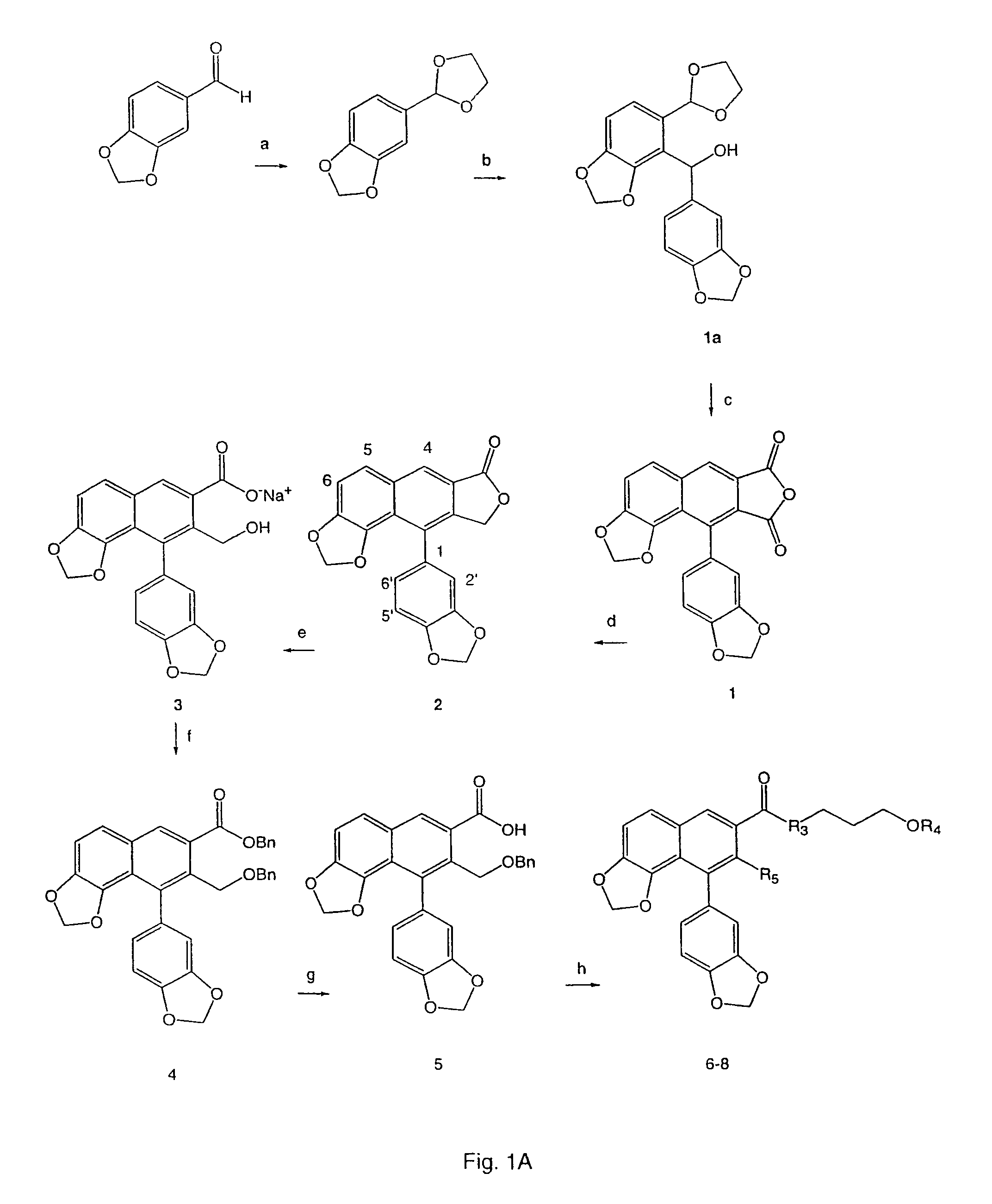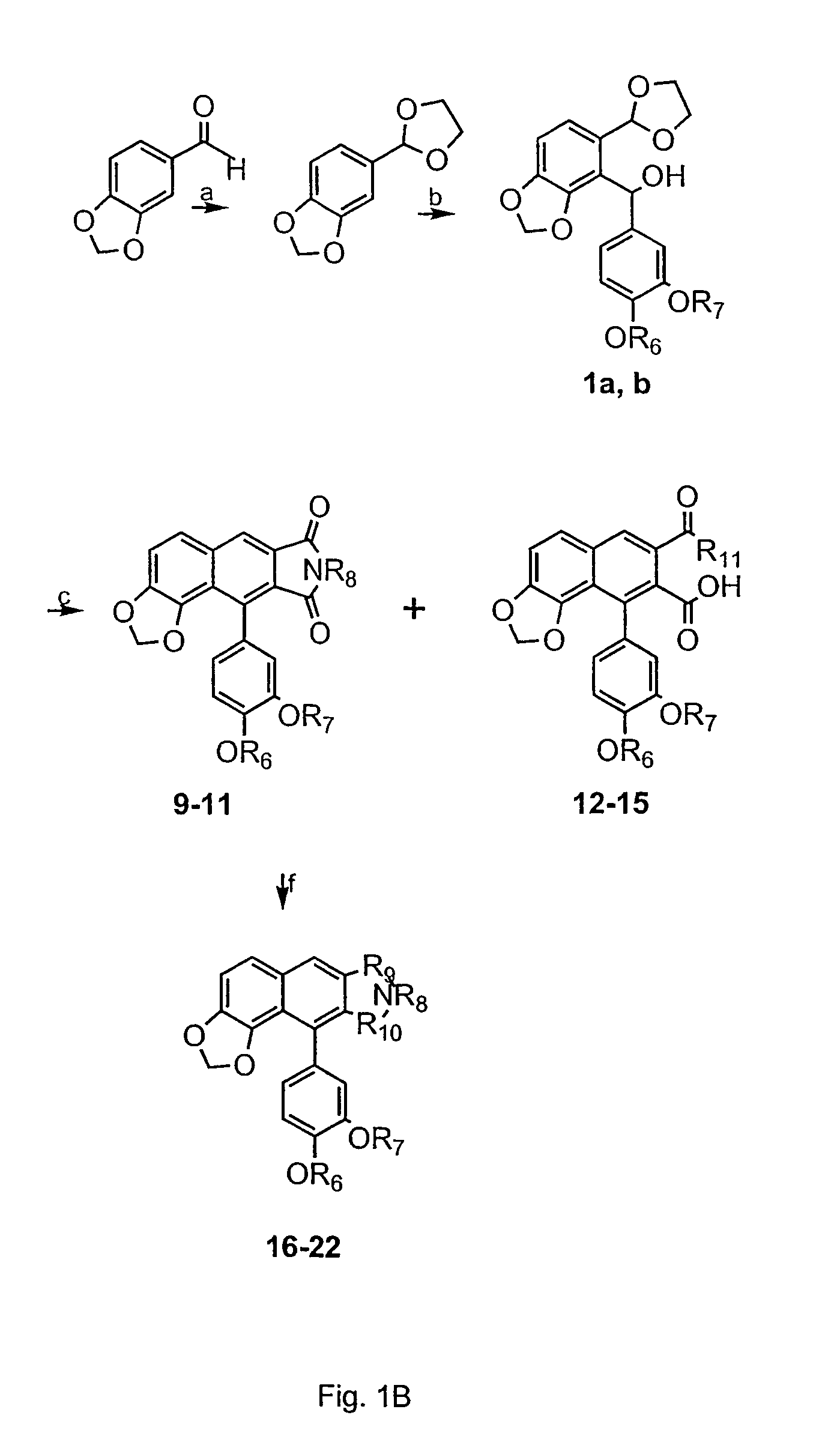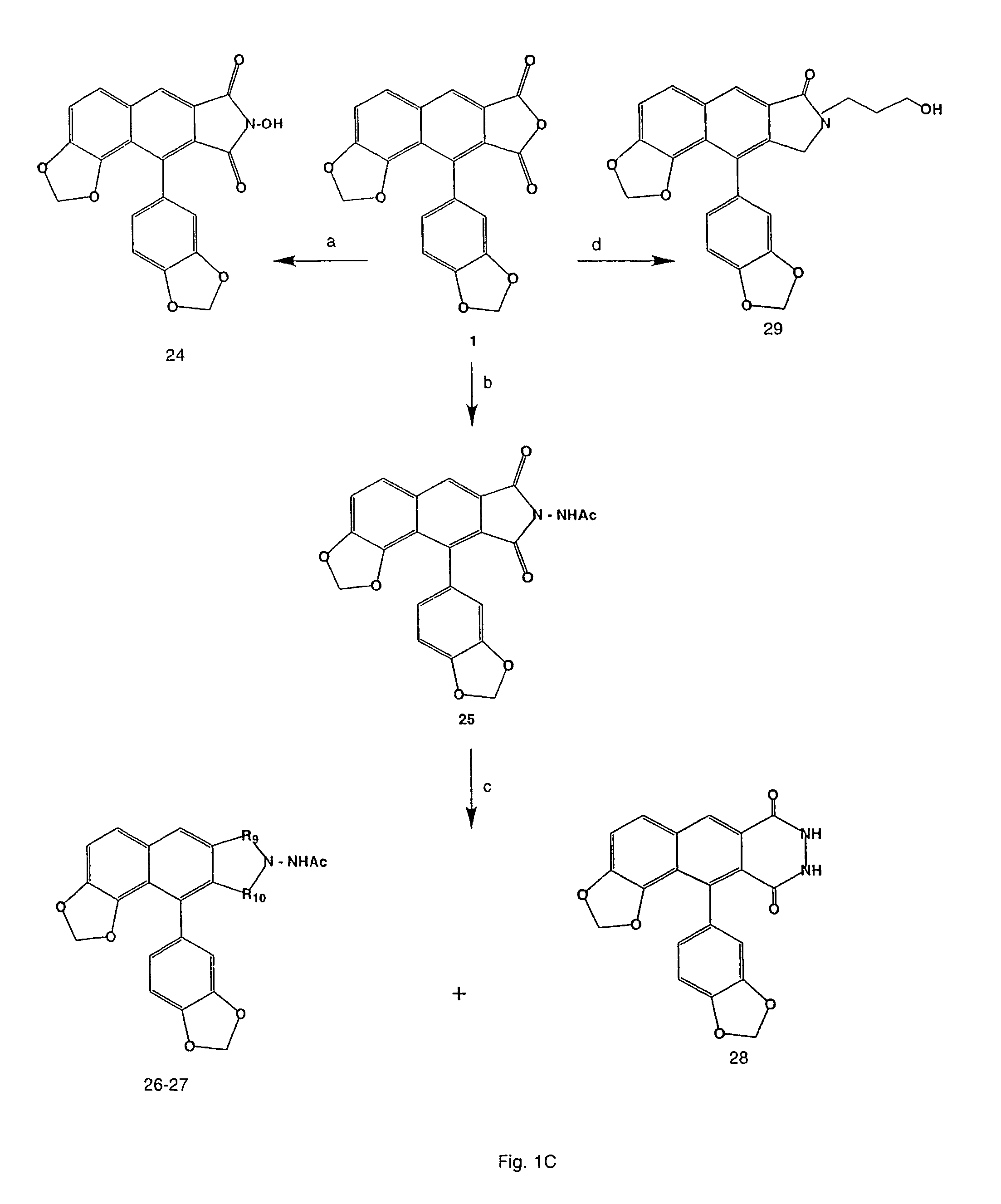Antiviral helioxanthin analogs
a technology of helioxanthin and antiviral helioxanthin, which is applied in the field of antiviral helioxanthin analogs, can solve the problems of no cross-protective immunity, acute hepatitis and liver damage, and elevated blood levels of certain enzymes, and achieves no cross-protective immunity. , the effect of reducing the risk of hepatitis b virus infection
- Summary
- Abstract
- Description
- Claims
- Application Information
AI Technical Summary
Benefits of technology
Problems solved by technology
Method used
Image
Examples
examples
Synthesis of Helioxanthin Analogs
[0163]Synthetic schemes are shown in FIGS. 1A-1E.
[0164]As shown in FIG. 1A, helioxanthin (2) was synthesized using procedure described in the literature, (Charlton et al., 1996, J. Org. Chem. 61:3452-3457), hydrolyzed with alkali, and then esterified with a mixture of alkali hydroxide and benzyl bromide to yield compound 4. The benzyl ester group of compound 4 was cleaved by alkaline hydrolysis to corresponding carboxylic acid, which was coupled with 3-benzyloxy-1-propanol by using 1,3-dicyclohexylcarbodiimide (DCC) and 4-dimethylaminopyridine (DMAP) to afford compound 6. Similarly, coupling of compound 5 to 3-(benzyloxy)propylamine in the presence of DCC and 1-hydroxybenzotriazole hydrate (1-HOBt) in CH2Cl2 gave compound 8.
[0165]The cyclic imides, 9 and 11, which are regarded as existing in a imide / imidol tautomeric mixtures, respectively, were prepared by the Diels-Alder reactions of hydroxyacetals and maleimide as depicted in FIG. 1B. Compounds 12...
PUM
 Login to View More
Login to View More Abstract
Description
Claims
Application Information
 Login to View More
Login to View More - R&D
- Intellectual Property
- Life Sciences
- Materials
- Tech Scout
- Unparalleled Data Quality
- Higher Quality Content
- 60% Fewer Hallucinations
Browse by: Latest US Patents, China's latest patents, Technical Efficacy Thesaurus, Application Domain, Technology Topic, Popular Technical Reports.
© 2025 PatSnap. All rights reserved.Legal|Privacy policy|Modern Slavery Act Transparency Statement|Sitemap|About US| Contact US: help@patsnap.com



